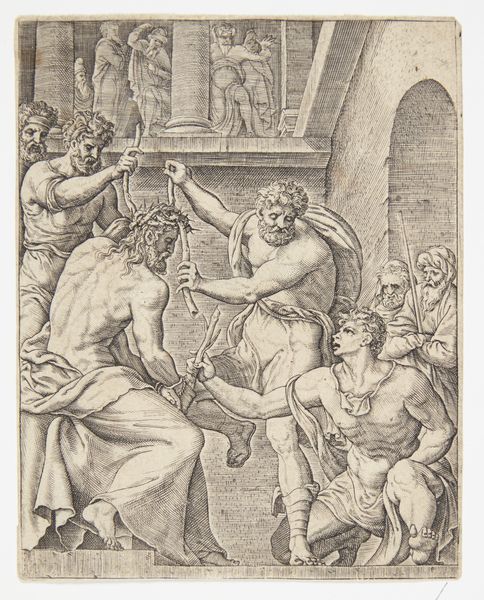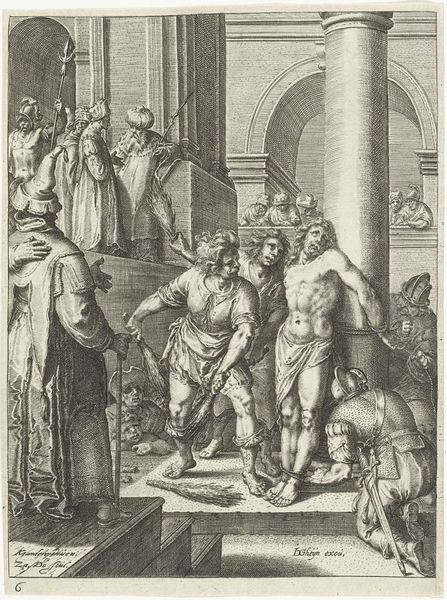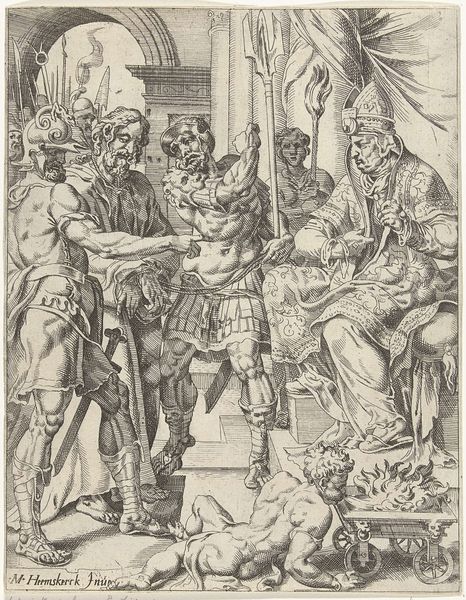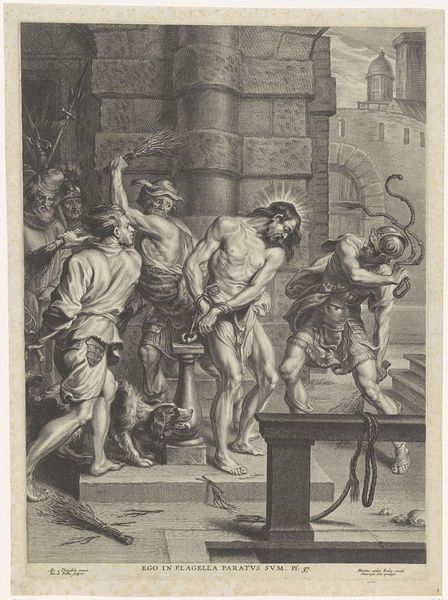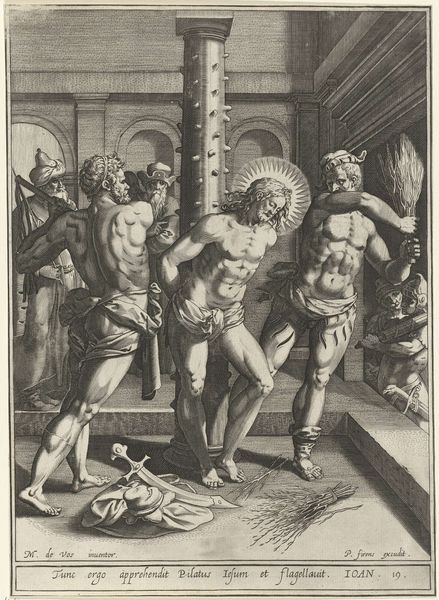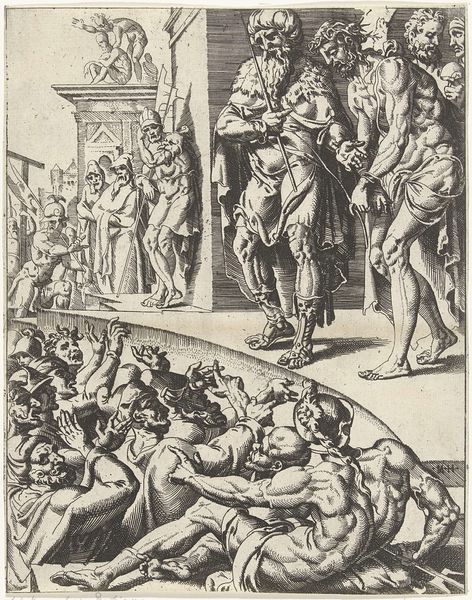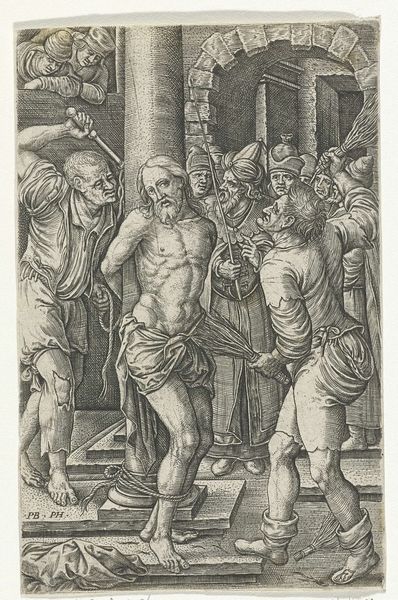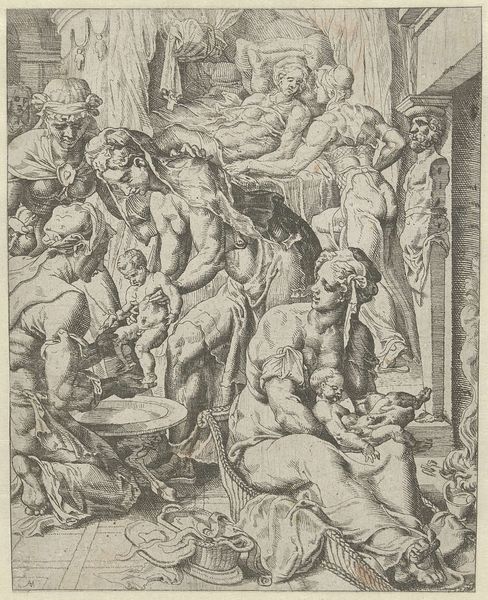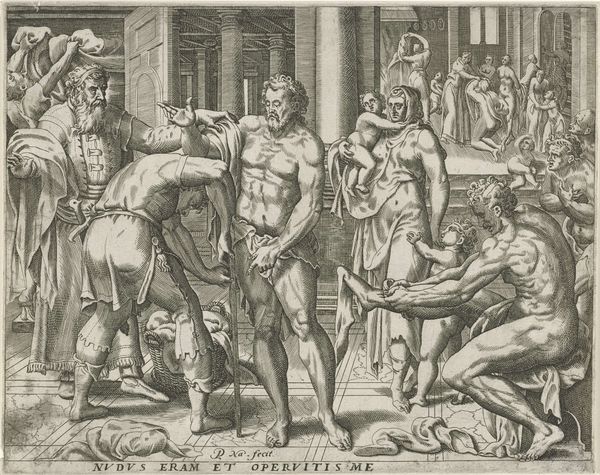
carving, print, engraving
#
carving
# print
#
figuration
#
history-painting
#
italian-renaissance
#
engraving
Dimensions: width 197 mm, height 248 mm
Copyright: Rijks Museum: Open Domain
Editor: This is "Christ Crowned with Thorns," an engraving made in 1548 by Dirck Volckertsz Coornhert. It's intensely dramatic; the way the figures are packed together really emphasizes Christ's suffering. What do you make of it? Curator: The scene pulses with charged symbols, doesn't it? Look at how the muscularity of Christ's tormentors contrasts with his weakened, seated pose. It is all carefully calculated to elicit feelings of shame, anguish and even awe. Consider, too, the architectural backdrop – almost like a stage for a ritual. Does the inclusion of these architectural elements evoke a certain historical era or cultural context to you? Editor: It reminds me of Roman architecture. Is that a conscious connection to the Roman soldiers in the biblical story? Curator: Precisely! The artist evokes classical imagery to associate authority, and in this instance, unjust power, with a historical empire. What effect does it achieve when he layers Christian narrative over those visual cues? What is he saying about power, empire, and divinity? Editor: So the image isn't just depicting a biblical scene but is making a statement about the nature of power and perhaps its abuse through history? It also puts me in the mind of the Renaissance and its obsession with ancient Roman ideals and aesthetic principles. Curator: Absolutely. And notice how Coornhert uses the relatively new medium of engraving. Printmaking allowed such charged imagery to disseminate widely and quickly. How might that factor into the work's overall cultural impact? Editor: It's like a Renaissance meme—spreading ideas rapidly. I’ll definitely look at prints differently now. Thank you! Curator: It's fascinating how images embed themselves in our collective memory and continue to speak across centuries, isn't it?
Comments
No comments
Be the first to comment and join the conversation on the ultimate creative platform.

